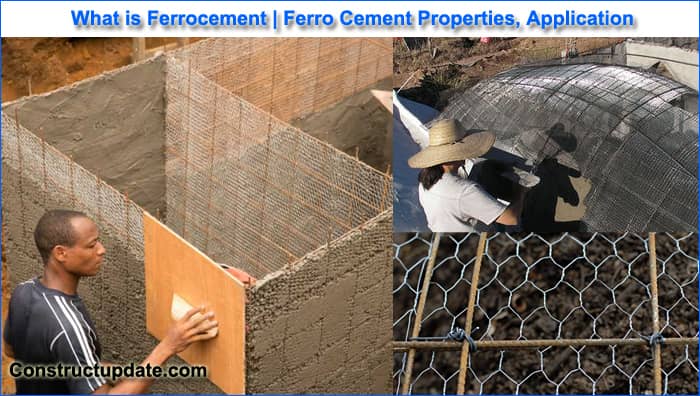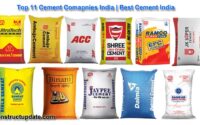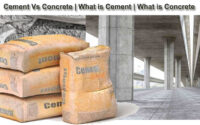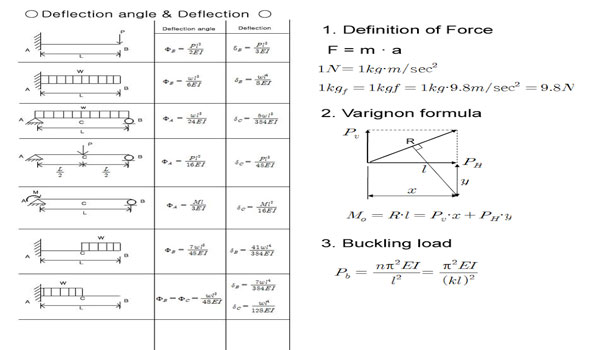All about Ferrocement | Ferrocement Properties, Application, and Advantages
Introduction
Ferrocement, a composite material used to create thin sections, is made up of a mortar and meshes and light steel textiles for support. A rowing boat was built using ferro cement, which was developed in France in the 1840s, before reinforced concrete was created. Ferro cement has a wide range of uses because of its low self-weight, affordability, lack of specialised labour, absence of necessity for support structures, etc.
What is Ferrocement?
A system of reinforced mortar or plaster put over layers of metal is known as ferro-concrete or ferro-cement. This study showed how ferrocement is superior to traditional varieties like RCC, PCC, etc. and how it performs well against lateral displacement, fire resistance, etc. without needing any trained labour. The material ferro concrete is relatively new and has good strength and impact resistance. Compared to conventional materials like wood, adobe, and stone masonry, it offered higher resilience to fire, earthquakes, and corrosion. Both building and repair materials use it. The major goal of the essay is to expose new technology, such as ferrocement, and its uses through a literature review that makes use of several references.
Ferrocement-built walls can endure temperatures from 0 degrees to 1700 degrees, after which the damage is minimal and repairable. There is little expansion in cement caused by fire, no cracking or splitting, and a very high bond. Any temporary framework can be reinforced with ferrocement in any shape, and mortar can be used. Ferrocement has consistently performed well in experiments, whether the stress was in tension, compression, flexure, shear, torsion, fatigue, impact, or dynamic loading.

Properties of Ferrocement
- Highly versatile form of reinforced concrete.
- It is a kind of thin reinforced concrete structure in which the cross-section is uniformly covered in a significant number of small-diameter wire meshes.
- Mesh may be metal or suitable material.
- Mortar made of Portland cement is used in place of concrete.
- Both the quality of the sand/cement mortar mix and the quantity of reinforcing elements employed affect the strength.
Advantages Of Ferrocement:
Ferrocement has the following basic advantages over RCC
i) Strengthening of the bond: The two materials’ bond allows for the transmission of loads from steel to concrete and vice versa. The bond is determined by the area of contact between the steel and concrete as well as the bond tension of the concrete. The grade of the concrete affects the bond stress. Only 6 kg/cm2 applies to M15 concrete. If the contact area between the steel and mortar is extended, the bond can be significantly strengthened. For ferrocement, it is accomplished by using mortar and small-diameter wires.
ii) Bond area increase: An increase in bond area will make steel and mortar adhere better, causing it to act more like a single material that is extremely strong under tension.
iii) Steel wire dispersion: By connecting numerous layers of continuous wire mesh, cement is created. Steel is present in relatively large quantities, possibly up to 8%. The mortar that covers the meshes is also only 3 to 5 mm thick. As a result, the wire reinforcement is dispersed uniformly throughout the body of the composite. As a result, ferrocement becomes more homogeneous. It improves the tension, flexure, impact resistance, and crack resistance properties of the ferrocement.
iv) Crack prevention: Meshes are placed very close to the surface of the Ferrocement and are fully adhered to mortar. Such sparse, tiny wires work as crack arrestors when they are placed so close to the surface of the Ferrocement.
v) Equal strength in both directions: Because to the continuity and placement of equal mesh reinforcement in both directions, ferrocement attains equal strength in both directions and becomes strong in resisting diagonal stresses caused by shear.
vi) Containment of mortar matrix in mesh layers: Layers of firmly bound wire meshes are impregnated with cement mortar to create ferrocement. The meshes in between hold the matrix in place and contain it.
vii) Formless construction: Ferro cement meshes that have been securely knotted can be pressfilled with wet cement mortar. Cement mortar has a very low water to cement ratio and a very thick consistency. It can’t get away from the meshes. As a result, casting of ferrocement does not require formwork or shuttering. Another advantage of technique is that pressfilling won’t produce honeycombing because the mortaring is carried out right in front of your eyes. If the mesh is knotted loosely, the water cement ratio is not maintained to a thick consistency, or too much sanding is done, the mortar will run down and not be contained by the meshes.
viii) Strength through shape: Ferrocrete buildings have thin walls that can range in thickness from hardly 25 to 50 mm. Ferrocement is therefore formed into various shapes to obtain its strength while also taking care to prevent slenderness and buckling.
ix) A thin, uniform, and adaptable material Structures made of cement have a high level of equal strength in all directions. It is moldable in any size and shape. Ferrocement may be produced in thin sections and is homogeneous and simple to deal with.
x) High strength-to-weight ratio: Due to its thin walls and great strength, ferro cement has very high strength-to-weight ratios in both tension and compression. Thin parts can therefore support greater weights.
Applications of Ferrocement in Construction
A variety of structural components, such as shells, walls, floors, roofs, and foundations, can be built using ferrocement. They are highly impermeable, have little weight, thin walls, and durability. It combines the benefits of thin sections and high strength steel. Moreover, no shuttering or formwork is needed for casting.
Cement is used in all sorts of civil construction, including sewage and water treatment facilities, bridges, domes, dams, boats, conduits, bunkers, silos, and large-scale space constructions that support water and earth.
- Housing and other Industrial and commercial.
- Marine
- Agricultural
- Anti corrosive Membrane treatment
- Tank container & silos
- Floor & Roof
- Waterproofing
- Manhole cover
- Wall cupboard
- Ferrocement Duct
- Chemical Resistant Treatment
- Rural Application
- Elevation Treatment
- Fire Resistant Structure
- Soil Stabilization
- Pipes
- Sewer Lines
- Bridge
- Foot Bridge
- Sulphate Resistant Cement Saving
- Pre-cast Ferrocement Structure




